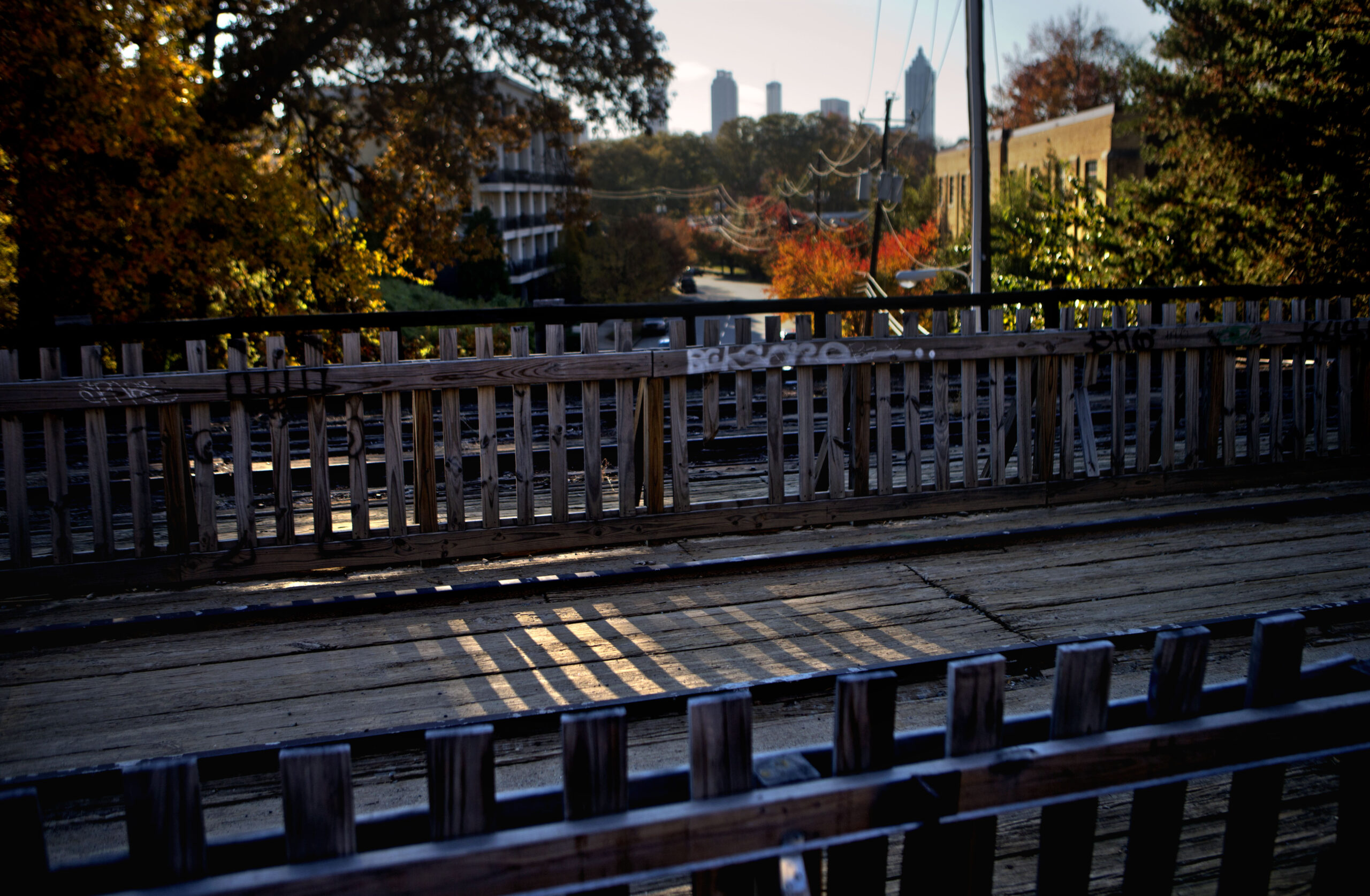In this Nov. 20, 2012 photo, a section of old rail tracks is preserved next to the Atlanta BeltLine as the midtown skyline stands in the background in Atlanta. AP Photo/David Goldman
EDITOR’S NOTE: Georgia’s largest city is known for its massive tree canopy, known colloquially as the “city in a forest.” Atlanta trees cover approximately half of the city, and if you look into the distance from downtown, the sprawling suburbs and outer neighborhoods are coated in treetops. Yet, Atlanta is experiencing an affordable housing crisis that has drastically decreased its housing supply over the past decades. The BeltLine is criticized and praised: it is a tool to improve the quality of life and also a suspected cause of the depletion of affordable housing in the metro, with direct correlation to rent and property value increases without sanctioning for affordable units and homes. In Brooklyn, the housing and rental market fluctuates as a result of many different factors. Housing is more dense here and the parks, while plentiful, are more scattered across the borough. Does the “green gentrification” concept equally apply to cities in the Northeast as in the South?
Is Atlanta a good place to live? Recent rankings certainly say so. In September 2022, Money magazine rated Atlanta the best place to live in the U.S., based on its strong labor market and job growth. The National Association of Realtors calls it the top housing market to watch in 2023, noting that Atlanta’s housing prices are lower than those in comparable cities and that it has a rapidly growing population.
But this is only part of the story. My new book, “Red Hot City: Housing, Race, and Exclusion in Twenty-First Century Atlanta,” takes a deep dive into the last three decades of housing, race and development in metropolitan Atlanta. As it shows, planning and policy decisions here have promoted a heavily racialized version of gentrification that has excluded lower-income, predominantly Black…
Read the full article here

Leave a Reply